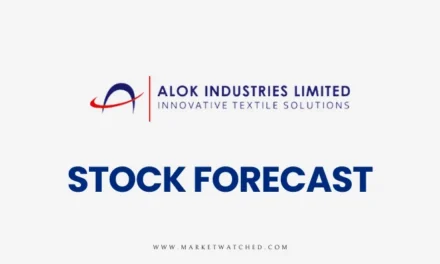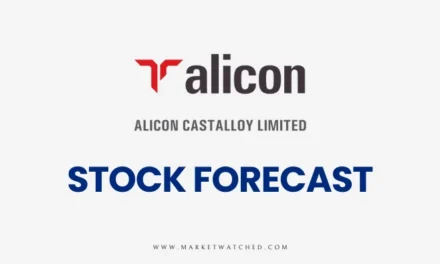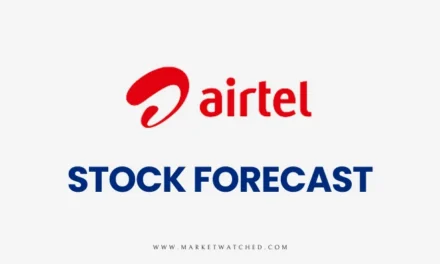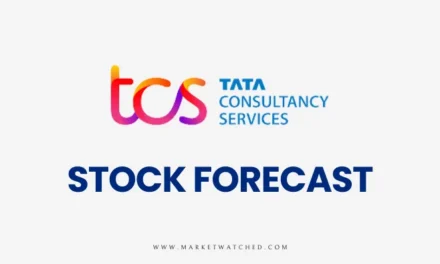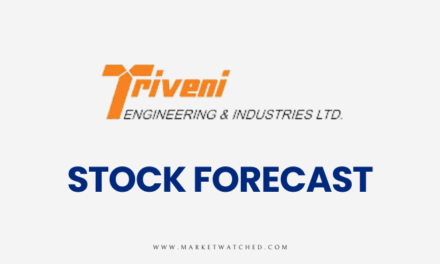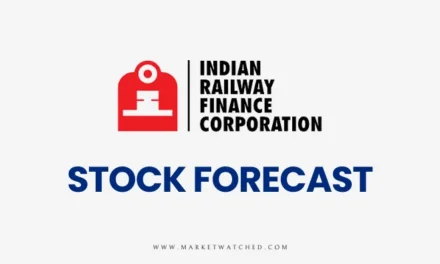
Alok Industries Share Price Target 2024-2050: Long-term Forecast & Analysis
Alok Industries Limited is one of India’s largest vertically integrated textile company. It is Owned By Reliance Industries. The company is publicly traded on both the National Stock Exchange (NSE) and the Bombay Stock Exchange (BSE).
This post offers a detailed analysis of Alok Industries share price targets from 2024 to 2050. By utilizing various technical analysis methods, we aim to provide long-term forecasts and potential share price targets up to 2050.
Overview of Alok Industries Limited
Alok Industries Limited is a prominent Indian textile manufacturing company that provides a wide range of textile products through its five core divisions: Home Textiles, Cotton Yarn, Apparel Fabric, Garments, Technical Textiles, Textile Accessories and Polyester Yarn. Established in 1986, the company has grown to become one of the largest integrated textile players in India, with operations spanning across various segments of the textile industry.
Key Aspects of Alok Industries:
- Product Portfolio: Alok Industries specializes in the manufacturing of home textiles, apparel fabrics, polyester yarns, and garments. The company serves both domestic and international markets, supplying high-quality products to major global brands and retailers.
- Manufacturing Facilities: The company boasts state-of-the-art manufacturing facilities, strategically located in Gujarat, India. Its vertically integrated operations cover every aspect of textile production, from spinning, weaving, knitting, and processing to garment manufacturing, allowing for cost efficiency and control over product quality.
- Global Presence: Alok Industries exports its products to over 90 countries, including the U.S., the U.K., Europe, and various other regions. Its global reach enables it to serve major international retailers and brands, making it a key player in the global textile market.
- Financial Restructuring and Reliance Takeover: Alok Industries went through financial difficulties and was placed under the Insolvency and Bankruptcy Code (IBC) in 2017. However, in 2020, the company was taken over by a consortium led by Reliance Industries and JM Financial Asset Reconstruction Company, which marked a significant turnaround in its financial and operational performance. Reliance’s acquisition has injected fresh capital and business expertise, giving Alok Industries a fresh start and potential for growth.
- Sustainability: Alok Industries focuses on adopting sustainable practices in its operations, including eco-friendly manufacturing processes and the use of recycled materials, in line with the global shift towards sustainability in the textile sector.
| Company Name | Alok Industries Limited |
| Industry | Textiles |
| Founded | 1986 |
| Country | India |
| Website | www.alokind.com |
On this page, you’ll find comprehensive information about the company’s current stock price, live charts, and the latest forecasts for both short- and long-term periods:
- Real-Time Stock Price: Updated every minute for the most current data.
- Technical Indicators: Updated according to specific time frames to provide timely insights.
- Financial Reports: Updated quarterly to reflect the latest financial performance.
- Stock Charts: Refreshed every minute for up-to-the-minute visual data.
Alok Industries stock forecast prices in the tables are updated automatically based on changes in the current asset price.
Alok Industries Stock Price Forecast for Tomorrow and the Coming Week Based on the Last 30 Days.
Technical Analysis of Alok Industries Based on Indicators
You can use indicator-based technical analysis for Alok Industries Ltd. to identify better entry points in the market. Adjust the time frame to suit your needs for the best analysis.
Alok Industries technical analysis signals are categorized to help you easily understand the market trends:
- “Sell” or “Strong Sell”: Indicates that most signals are bearish (negative).
- “Buy” or “Strong Buy”: Indicates that most signals are bullish (positive).
Keep in mind that signals can vary across different time frames. For short-term analysis, it’s recommended to use settings ranging from 15 minutes to 2 hours. If you’re planning to hold Alok Industries Ltd. stock for more than a week, use settings that range from days to weeks.
Alok Industries Ltd. Financials Data
Use the landscape mode for best viewing on mobile devices.
Alok Industries Share Price Targets: 2024 to 2050 Snapshot
These “Alok Industries Limited” price targets are for reference purposes only. Short-term and long-term Alok Industries stock price predictions may vary due to the time series that were analyzed differently. This prediction assumes positive market sentiments, and this analysis does not cover any uncertainties in the company or global market conditions.
Alok Industries Ltd. Share Price Target 2024
Alok Industries Ltd. Share Price Target 2025
Alok Industries Ltd. Share Price Target 2026
Alok Industries Ltd. Share Price Target 2027
Alok Industries Share Price Target 2028
Alok Industries Share Price Target 2029
Alok Industries Share Price Target 2030
Alok Industries Share Price Target 2040
Alok Industries Share Price Target 2050
Alok Industries Ltd. Chart Online
Main Factors That Affect Alok Industries Stock Price
- Strong Support from Reliance Industries: One of the most significant reasons to consider investing in Alok Industries is its acquisition by Reliance Industries in 2020. This backing has provided the company with financial stability and operational expertise, giving it the ability to improve its performance and expand its footprint in the textile market. Reliance’s involvement is a major positive factor for long-term investors.
- Global Market Presence: Alok Industries exports to over 90 countries, supplying textiles to major international brands. This global reach positions the company well to benefit from growing demand for textiles and fabrics in international markets, offering investors the potential for exposure to a diversified market base.
- Integrated Operations for Cost Efficiency: Alok operates a vertically integrated business model, covering the entire textile production chain from spinning and weaving to processing and garment manufacturing. This integration allows for cost efficiencies, quality control, and better margins, making it more competitive compared to other players in the industry.
- Expansion in Sustainable Textiles: The global shift towards sustainability in the textile industry is creating new opportunities. Alok Industries’ focus on eco-friendly manufacturing and use of recycled materials aligns with this trend. This focus can help the company tap into the growing demand for sustainable products, providing an attractive long-term growth avenue.
- Turnaround Potential: Following financial difficulties in the past, Alok Industries is now in a recovery phase, with strong financial and operational support from Reliance. This turnaround story, coupled with improving market conditions in the textile sector, makes it a potential growth stock for investors who are looking for long-term gains.
- Growing Indian Textile Market: India’s textile sector is expected to see robust growth due to rising domestic consumption, increasing exports, and government initiatives like the Production Linked Incentive (PLI) scheme. Alok Industries, being a key player in this sector, is well-positioned to benefit from these macroeconomic trends.
Why Invest in Alok Industries Ltd.: Key Benefits
- Strategic Support from Reliance Industries: Alok Industries benefits from the financial backing of Reliance Industries, which took control of the company in 2020 after it faced insolvency. This strategic acquisition has provided Alok with the resources and expertise needed to improve operations, reduce debt, and explore new growth opportunities in the global textile market.
- Strong Global Presence: Alok Industries exports textiles to more than 90 countries, making it a significant player in the international market. Its ability to serve major global brands provides it with a diversified revenue base, reducing dependency on any one market and increasing its resilience against economic fluctuations.
- Vertical Integration for Cost Efficiency: The company operates a vertically integrated business model, meaning it handles the entire production process, from spinning and weaving to processing and garment manufacturing. This allows Alok Industries to maintain quality control, achieve cost efficiencies, and enhance its competitiveness in the market.
- Focus on Sustainable Practices: Alok Industries has embraced sustainability by incorporating eco-friendly manufacturing processes and using recycled materials. As global demand for sustainable textiles rises, the company is well-positioned to cater to this growing market segment, which could provide a competitive advantage and appeal to environmentally conscious consumers.
- Revival Story: After struggling financially and undergoing insolvency proceedings, Alok Industries is in recovery mode, with its acquisition by Reliance playing a pivotal role in its turnaround. The company has reduced debt and is now better positioned to capitalize on growth opportunities, making it an appealing option for investors seeking value in turnaround stories.
- Rising Textile Industry Demand: The Indian textile sector is poised for significant growth, driven by increasing exports, government incentives such as the Production Linked Incentive (PLI) scheme, and rising domestic demand for textile products. Alok Industries, being a major player, stands to benefit from these favorable macroeconomic trends.
Key Risks to Consider Before Investing in Alok Industries Ltd.
Financial Health:
- Debt Levels: Alok Industries has historically faced high levels of debt, which can impact its financial stability and ability to invest in growth or weather economic downturns.
- Cash Flow: Negative cash flow or inconsistent cash flow can affect the company’s ability to meet its obligations and fund operations.
Market Competition:
- Competitive Pressure: The textile industry is highly competitive, with numerous players in both domestic and international markets. Alok Industries must continuously innovate and manage costs to maintain its market share.
- Price Fluctuations: Volatility in raw material prices, especially for cotton and polyester, can impact profitability.
Operational Challenges:
- Supply Chain Disruptions: Any disruptions in the supply chain, such as delays or increases in raw material costs, can adversely affect production and profitability.
- Production Capacity: The company’s ability to manage production efficiently and scale operations can impact its competitiveness and margins.
Economic Conditions:
- Economic Slowdown: A downturn in economic conditions can lead to reduced consumer spending, impacting demand for Alok Industries’ products.
- Inflation and Interest Rates: Changes in inflation rates and interest rates can affect operating costs and borrowing expenses.
Regulatory Risks:
- Compliance Costs: Changes in regulations related to environmental standards, labor laws, or trade policies can increase compliance costs and impact profitability.
- Trade Policies: Tariffs and trade restrictions can affect the company’s export opportunities and cost structure.
Recommendations: Should I invest in Alok Industries Ltd. stock or sell it?
Based on our stock forecast, Alok Industries Ltd. does not currently demonstrate the expected growth potential in the coming years. As such, we do not recommend this stock for new investment at this time. However, it is important to recognize that the company’s future prospects may improve due to its integration into Reliance Industries’ ecosystem, its global market reach, focus on sustainability, and potential for long-term growth in both domestic and international textile markets.
For Current Investors:
- Evaluate Your Position: Assess your investment goals and risk tolerance. Given the current lack of promising growth, it might be wise to reconsider your position in Alok Industries Ltd.
- Consider Selling: If the stock’s future growth projections remain negative and do not align with your investment strategy, selling might be a prudent choice to avoid potential losses. Reinvesting in stocks with better growth prospects or more stable returns could be more beneficial.
For Potential Investors:
- Hold Off on New Investment: If you seek stable, long-term growth, it may be prudent to delay investing in Alok Industries Ltd. The stock’s current lack of promising growth potential and associated risks could outweigh the benefits.
- Monitor Closely: Keep track of the company’s performance and any strategic changes that may impact its future prospects. Significant improvements in financial health, operational efficiency, or market conditions could make it a more attractive investment in the future.
Alternative Investment Opportunities:
- Explore Other Options: Consider investing in sectors or companies with stronger growth prospects or more stable financial performance. Diversification into high-growth or stable sectors can reduce risk and enhance overall portfolio performance.
Summary: Due to the limited growth potential and associated risks, it may be wise to either hold off on new investments or consider selling if you currently hold Alok Industries Ltd. stock. Diversifying your investments and focusing on opportunities with better growth prospects could enhance your overall portfolio performance.
LIC India Share Price Target: Long-term Forecast & Analysis
LIC stands for Life Insurance Corporation of India. It started its operations as a corporate firm after the LIC Act came into effect in July 1956. READ MORE
Price Prediction Methodology
The following tools are utilized for making predictions:
- Consensus and Expert Opinion: Forecasts are also informed by the consensus of expert opinions, providing a well-rounded perspective.
- Technical Analysis: This fundamental tool involves studying price charts and employing various indicators to forecast future price movements. The analysis is primarily conducted on medium- and long-term time frames for enhanced accuracy.
- Statistical Methods: These are used to evaluate the likelihood, type, and intensity of fundamental factors that could influence price fluctuations.
- Predictive Modeling: This approach leverages statistical algorithms to forecast future prices based on historical data patterns.

